Wrinkle Treatment in Mumbai
Search and Compare the Best Clinics and Doctors at the Lowest Prices for Wrinkle Treatment in Mumbai

Find the best clinics for Wrinkle Treatment in Mumbai
With Medijump you can browse 3 facilities offering Wrinkle Treatment procedures in Mumbai. The cheapest price available is $439 in Delhi. And for the cheapest price globally, prices start from $53 in Thailand.
Wrinkle Treatment in India
Price: $ 439
Wrinkle Treatment in Delhi
Price: $ 439
Thailand offers the best prices Worldwide
Price: $ 53
From 168 verified reviews
Lalit Lakhanpal, 20 September 2020
Excellent staff, very polite, very professional.Specially Anju sister and Titu head sister were amazing.Rooms are very well maintained, doctors are very professional.
From 165 verified reviews
Manish Sharma, 16 September 2020
Great prices. Honest doctor's. They do not pay referrals or commissions to your doctor and are hence not usually referred to by leading cardiologists of the city. Very safe for Covid times as they seek a double test before admission. Finally, they are expensive but they gave me enough pre-information on what to expect.
From 168 verified reviews
vijay gokhale, 18 September 2020
All medical departments under one roof. Spacious. Billing on each department floor. Good qualified doctors. Separate lifts for OPD & indoor patients at many places on each floor. Easy to find if you follow colour strip on each floor. Good helpful staff. Easy appointment.
Compare Before & After Photos of _procedure_photos.phpWrinkle Treatment
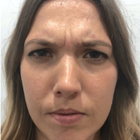
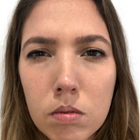
Front view
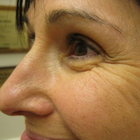

Half-side view
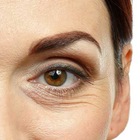
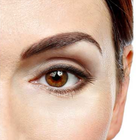
Front view


Half-side view

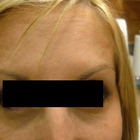
Front view

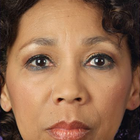
Front view
WHY US?
At Medijump, we're making medical easy. You can search, compare, discuss, and book your medical all in one place. We open the door to the best medical providers worldwide, saving you time and energy along the way, and it's all for FREE, no hidden fees, and no price markups guaranteed. So what are you waiting for?

Free

Best Price

Widest Selection

Risk-Free
What you need to know about Wrinkle Treatment in Mumbai
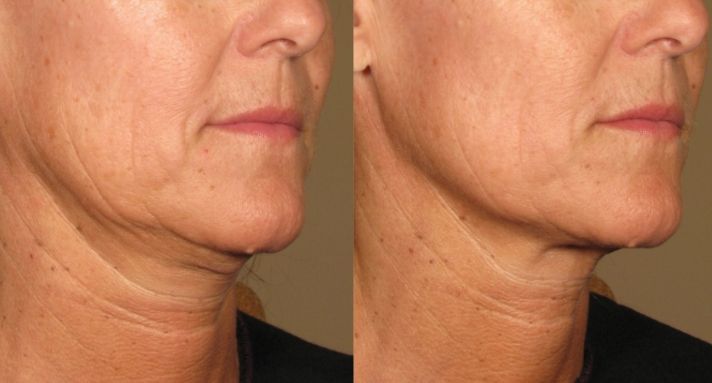
Ultherapy is an FDA-approved non-invasive skin tightening treatment. Known as the non-surgical alternative to facelift surgery, Ultherapy uses a focused ultrasound beam to boost collagen production in the deeper layers of your skin. Collagen is a natural protein that comes in numerous different types. It gives firmness and tightness to your skin. As we grow old, collagen loses its strength and firmness and shows laxity. This procedure gives collagen its strength back.
While a facelift offers more obvious results, it leaves scars and has other associated risks such as nerve damage and clot formation. Ultherapy, on the other hand, requires plenty of time to make its effects visible. Also, more sessions are needed to maintain its effects. It strengthens the loose skin of your face and neck and nullifies the effects of ageing on your face. It has the advantage that there is no downtime for it. You can apply makeup immediately after the procedure. This procedure needs to be repeated every six months or a year.
Ultherapy tightens and strengthens your loose skin without giving incisions and stitches. Instead, a focused ultrasound beam is used to lift your skin. Before going through the therapy, you have a lower eyebrow line, droopy lower eyelid, flat saggy cheeks, and loose skin of the neck. After Ultherapy, your skin looks glowing and rejuvenated, cheeks look healthy and plumped, and eyelids look lifted.
What does a Wrinkle Treatment Procedure Involve?
The procedure begins with cleaning your skin with an alcohol swab to kill any germs present at the spot. A specialized gel is applied to your skin. The focused ultrasound beam is used to produce thermal effects in the deeper layers of skin. The device is pressed firmly on to the skin of areas that needs strengthening. This induces new collagen production in these layers and gives firmness to the previous one. Ultrasound rays are applied over the areas where skin tightening is intended, such as the face and the neck. The time of procedure varies with the areas which are to be treated. It produces thermal effects which can be the cause of discomfort during the process. It lasts for a small period of time when the energy is being delivered into skin layers. This slight discomfort is a sign that the collagen-boosting process has been started.
How Long Should I Stay in Mumbai for a Wrinkle Treatment Procedure?
Ultherapy takes 1 to 1.5 hours or more depending upon the dimensions of the area which is being treated. Since it is an outpatient procedure, you can leave for home on the same day of the treatment. However, you should plan to stay in Mumbai for at least 5 days after your procedure. This will allow for the initial recovery and follow-up check-ups. Slight swelling and discomfort are normal during your stay. However, if it aggravates, there might be something wrong. Your health conditions are monitored during this duration.
What's the Recovery Time for Wrinkle Treatment Procedures in Mumbai?
As there is no downtime, you need not take any day off from work. You can get back to work immediately after the therapy. Minimal bruising is reported at the sites of Ultherapy where bones are present. This discomfort is for a small period of time. There might be tenderness and swelling in your skin which can last for one month after the procedure. 3 to 6 months are required for the results to become evident. Keep in mind that everyone continues to age and no process or treatment can stop aging. Therefore, the effects of Ultherapy subsides after a few years. Touch up treatments help to maintain its effects.
What sort of Aftercare is Required for Wrinkle Treatment Procedures in Mumbai?
After going through Ultherapy, take care of the following points to look after you:
- Avoid contact with direct sunlight for 2 to 3 months after this therapy. At the first place do not go outside in day time. If it is necessary, wear a strong sunscreen to protect your skin from harmful rays of light.
- Do not apply any product on your skin which can cause allergy or irritation.
- Use icepacks to ease you from itching and swelling. They are very effective in reducing redness.
- Do not massage and rub your skin for at least 1 to 2 weeks. It can aggravate redness and irritation in your skin.
- Cover yourself properly when going out after the procedure.
- Moisturize your skin twice or thrice a day. Use a moisturizer prescribed by your doctor.
What's the Success Rate of Wrinkle Treatment Procedures in Mumbai?
This therapy is almost always successful. Results vary and their time of appearance varies. Some people show more positive results while others show a moderate difference in their physical appearance. But it works on all. According to a study, 65% of the patients reported improvement in their skin quality after 2 to 8 months. While 67% seemed very satisfied with the results after only 3 months. The success of Ultherapy depends upon your genes and other factors too.
Are there Alternatives to Wrinkle Treatment Procedures in Mumbai?
The following are some alternatives to Ultherapy:
- Microcurrent facelift: this involves electrical stimulation of your tissues, skin, and muscles to increase their tone and impart a rejuvenating effect. Also, electrical current boosts collagen production and increases blood circulation in your body. It shows immediate results which can last for 48 hours only. You can opt for it for special events.
- Dermal fillers: also known as a liquid facelift, dermal fillers such as Sculptra, Juvederm, and Restylane are injected into your skin to give your facial features a lift. It treats wrinkles and aging lines on your skin. Each dermal filler works differently in different parts of your body.
- Laser facelift: laser light is used to stimulate inner layers of your skin to boost collagen production. This requires 30 minutes with no downtime.
All the techniques mentioned above are minimally invasive with almost no downtime, pain and incisions.
Overall, you will look younger than your actual age. But its effects last for only 12 to 15 months, after which you will need touch ups.
Whilst the information presented here has been accurately sourced and verified by a medical professional for its accuracy, it is still advised to consult with your doctor before pursuing a medical treatment at one of the listed medical providers
No Time?
Tell us what you're looking for and we'll reachout to the top clinics all at once
Enquire Now

Popular Procedures in Mumbai
Prices Start From $111

Prices Start From $16

Prices Start From $28

Prices Start From $5

Recommended Medical Centers in Mumbai for Wrinkle Treatment

- Interpreter services
- Translation service
- Religious facilities
- Medical records transfer
- Medical travel insurance
- Health insurance coordination
- TV in the room
- Safe in the room
- Phone in the room
- Private rooms for patients available

- Interpreter services
- Translation service
- Religious facilities
- Medical records transfer
- Medical travel insurance
- Health insurance coordination
- TV in the room
- Safe in the room
- Phone in the room
- Private rooms for patients available

- Interpreter services
- Translation service
- Religious facilities
- Medical records transfer
- Medical travel insurance
- Health insurance coordination
- TV in the room
- Safe in the room
- Phone in the room
- Private rooms for patients available

- Interpreter services
- Translation service
- Religious facilities
- Medical records transfer
- Medical travel insurance
- Health insurance coordination
- TV in the room
- Safe in the room
- Phone in the room
- Private rooms for patients available

- Interpreter services
- Translation service
- Religious facilities
- Medical records transfer
- Medical travel insurance
- Health insurance coordination
- TV in the room
- Safe in the room
- Phone in the room
- Private rooms for patients available

- Interpreter services
- Translation service
- Religious facilities
- Medical records transfer
- Medical travel insurance
- Health insurance coordination
- TV in the room
- Safe in the room
- Phone in the room
- Private rooms for patients available

- Interpreter services
- Translation service
- Religious facilities
- Medical records transfer
- Medical travel insurance
- Health insurance coordination
- TV in the room
- Safe in the room
- Phone in the room
- Private rooms for patients available

- Interpreter services
- Translation service
- Religious facilities
- Medical records transfer
- Medical travel insurance
- Health insurance coordination
- TV in the room
- Safe in the room
- Phone in the room
- Private rooms for patients available

- Interpreter services
- Translation service
- Religious facilities
- Medical records transfer
- Medical travel insurance
- Health insurance coordination
- TV in the room
- Safe in the room
- Phone in the room
- Private rooms for patients available

- Interpreter services
- Translation service
- Religious facilities
- Medical records transfer
- Medical travel insurance
- Health insurance coordination
- TV in the room
- Safe in the room
- Phone in the room
- Private rooms for patients available
Wrinkle Treatment in and around Mumbai
About Mumbai
Mumbai, formerly known as Bombay, is a big cosmopolitan city. It’s the wealthiest city in India with the highest number of millionaires and billionaires. It’s the perfect place for anyone who wants to immerse in tradition and modernity, as the city is a grand mixture of old and new. The city is also home to Bollywood, India’s film industry. Tourists flock to the city for its historical sites, amazing food, unique bazaar, and recently, for its medical tourism.
In line with India’s growing medical tourism, Mumbai has gained a lot of attention as a medical destination. In 2017, 27 percent of medical tourism activities in India took place in the state of Maharashtra. Armed with advanced medical technology, world-class doctors, hospitals with the highest-quality, affordable cost, and a wide range of healthcare, Mumbai is the leading city in the state with 80 percent of patients choose to have a medical procedure there.
Most hospitals are accredited by Joint Commission International (JCI) or National Accreditation Board for Hospitals & Healthcare Providers (NABH). Hospitals like Kokilaben Dhirubhai Ambani Hospital, Global Hospitals Mumbai, and Wockhardt Hospital South Mumbai are patients’ favorite. Among the most popular procedures are cosmetic and plastic surgery as well as eye surgery.
Popular Areas in Mumbai
Tourists are drawn to the city for various reasons. Some want to indulge in its energetic vibe, others want to be fascinated by its history.
- Gateway of India was built in 1924 and is the most valued structure in India. It’s located at the tip of Apollo Bunder, overlooking the Mumbai harbor. The structure is designed in Indo-Saracenic style with traces of Muslim architectural style. It was built to welcome King George V and Queen Mary to Mumbai. Tourists can take a stroll and learn the history of this unique landmark.
- Siddhivinayak Temple will leave anyone in awe. Built-in 1801 by Laxman Vithu and Deubai Patil, it is a Hindu temple dedicated to Lord Shri Ganesh. The temple evolved from a small place of worship to a grand temple. Politicians and Bollywood film stars frequently visit this temple. Tourists can find many interesting facts and cultural insight here.
- Elephanta Caves are a collection of cave temples mostly dedicated to the Hindu god Shiva. The caves are a UNESCO World Heritage Site. People visit to see its fine specimens of the ancient Hindu culture and tradition as well as for their rock-cut sculptures. The statue of Trimurti Sadasiva form of Lord Shiva is the most famous sculpture in this cave. The caves were named Elefante (morphed to Elephanta) by the colonial Portuguese because they found elephant statues on it.
- Marine Drives is an important destination for tourists visiting Mumbai. It’s a 3km long road in southern Mumbai which forms a natural bay. Its fantastic sunset view is very popular among locals and international tourists. People also come for its perfectly lined palm trees that offer scenic beauty.
- Film City is where most iconic scenes from India’s film were shot. It’s located near Sanjay Gandhi National Park at Goregaon East. With all the essential equipment and world-class facilities, it’s one of the largest indoor shooting facilities in India. This attraction offers tourists a world of wonder.
Weather and Climate in Mumbai
Mumbai has a tropical, wet, and dry climate. Summer starts approaching the city in late March and ends in May. It might not be the best time to visit since the temperature can get as high as 40 °C and the humidity can also be very high. If you can bear hot temperatures and high humidity, there are many festivals worth visiting during these months.
June to October is the monsoon season which sees continuous rain showers, making traveling more difficult. The temperature is not as high as the Summer.
Winter has the most pleasant weather. It starts in November and lasts until February. The temperature is not too hot or too cold and the humidity is very low, so tourists can enjoy many outdoor activities and sightseeing. The coolest month in Mumbai in January, with the temperature ranging between 13 °C to 30 °C.
Getting Around in Mumbai
Chhatrapati Shivaji International Airport is the main international airport in Mumbai. It’s the second busiest airport in India. The airport serves domestic and international flights to major cities in Asia and Europe. Budget airlines such as GoAir, flydubai, and AirAsia India.
Taxis, auto-rickshaws, and car rentals are available to travel from the airport to Mumbai’s city center. Taxis will take tourists around 25 minutes (depending on the traffic) to the city center. There are two taxi options; metered taxis and pre-paid taxis. Auto-rickshaws are metered and available from Terminal 1, they are cheaper than taxis. Car rentals are the best option if you want to have more flexibility and independence, you can rent directly at the airport.
There are various transportation modes to get around Mumbai. The local Train has 120 stops so you can get off on your nearest destination easily, trains start at 4.00am and stop at 2.00am. While the second class ticket is very cheap, it’s usually very crowded and uncomfortable. Tourists can buy a tourist ticket for 275 INR which allows them to travel in first class for the whole day.
The Mumbai Metro is a cheaper option, with the fares ranging from 10 to 40 INR. The train leaves every 4 minutes during busy hours and 8 minutes on non-busy hours. Buses in Mumbai are known as Brihanmumbai Electric Supply and Transport (BEST), they run from 5.00am to midnight.
Taxis are cheap and easy to find. The minimum fare is 21 INR for the first 1.5 km and then 1 INR for every 100 meters. Make sure to check the meter yourself before paying because some drivers are known to cheat. Auto-rickshaws are widely available, the base fare should be 18 INR and 1 INR to 2 INR for every 100 meters.
Tourist Visas in Mumbai
Citizens of Nepal and Bhutan are granted visa-free entry. Visa on arrival is available for citizens of Japan and South Korea. India provides e-Visa for 150 countries, the visa is valid for 60 days. If you come for medical treatment, you can apply for the medical attendant e-visa. Citizens of other countries are required to apply and obtain a visa to enter the country.
Additional Information
- Local Currency: The local currency is the Indian rupee (INR). 1 USD is equivalent to 70 INR.
- Money & Payments: tourists can find ATMs everywhere. Credit cards are accepted in most hotels and restaurants but it is advisable to always bring cash. Tipping is optional.
- Local Language: Marathi is the state and city official language. Hindi is widely spoken. English is widely used in most places and many locals speak broken English.
- Local Culture and Religion: Due to the growth of various communities and migrants, there are many religions in the city. Most people are Hindus, Muslims, Zoroastrians, Christians, Jains, and Buddhist.
- Public Holidays: Mumbai celebrates almost all major religious holidays. The city hosts several annual festivals such as Ganesh Chaturthi and Holi Festival.
Popular Searches
- Plastic Surgery in Thailand
- Dental Implants in Thailand
- Hair Transplant in Thailand
- Breast Augmentation Thailand
- Gastric Sleeve in Thailand
- Gender Reassignment Surgery in Thailand
- Laser Hair Removal in Bangkok
- Botox in Bangkok
- Dermatology in Bangkok
- Breast Augmentation in Bangkok
- Coolsculpting in Bangkok
- Veneers in Turkey
- Hair Transplant in Turkey
- Rhinoplasty in Turkey
- Stem Cell Therapy in Mexico
- Rhinoplasty in Mexico
- Liposuction in Mexico
- Coolsculpting in Tijuana
- Rhinoplasty in Korea
- Scar Removal in Korea
- Gastric Sleeve in Turkey
- Bone Marrow Transplant in India
- Invisalign in Malaysia
- Plastic Surgery in the Dominican Republic
- Tummy Tuck in the Dominican Republic
- Plastic and Cosmetic Surgery in Poland
- Rhinoplasty in Poland
- Hair Implant in Poland
- Dental Implants in Poland
- IVF in Turkey


